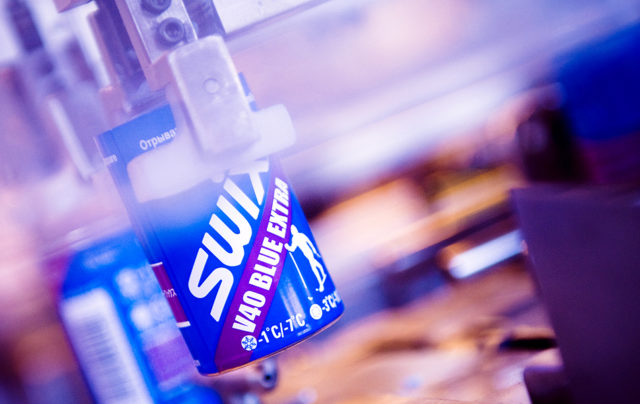TOPICS & TIMES:
- Graham’s background in ski racing (1:45)
- Kick Wax vs. Glide Wax (4:00)
- Base Prep & Top Coat (6:30)
- Paraffin vs. Liquid vs. Powdered (8:21)
- Application methods (12:40)
- What is “water management”? (16:12)
- How often do pros “burn” their skis? (21:15)
- The death of hot scraping? (27:20)
- The push to eliminate fluorocarbons (41:26)
- DPS Phantom vs. traditional wax? (50:22)
We talk with Graham Lonetto, the Alpine Director for the USA at Swix — the company that invented color-coded waxes, and one of the largest manufacturers of ski wax in the world — about different types of waxes and application methods; the most common mistake made when waxing skis; the FIS’s ban on fluorocarbons in waxes; and more.


w.r.t. pros burning their skis, Ron LeMaster published a good photo breakdown and explanation of the “stivot” move that Graham described here: http://www.ronlemaster.com/articles/skidding-SR6_TechTalk.pdf. See the montage of Ligety in the upper-left in particular.
One other thing that wasn’t discussed here is the initial “filling up” of the base after a stonegrind. That usually involves several cycles of hot waxing, whether by iron, hotbox, or (more recently) IR.
As a life long XC, tele and downhill skier I found it interesting to hear someone passing on some good info about waxing. Most of this was not new to me – if you ski XC you have to know most of it whereas I find downhill people often are completely ignorant about what happens under their skis. I’d take issue with only one aspect. When Graham spoke about structure he used the car tyre analogy which I think is misleading. The tread channels on car tyres are designed to move water away but skis (as he said) need a layer of water to glide. Structure on skis is not to “move” water it’s there to disrupt the surface tension that causes the skis to “suck” and not glide. Most xc skiers know that there have been plenty of successful factory structures (and some you can apply with home tools) that are not even continuous so the notion that they move the water away is just not plausible. Otherwise very interesting and good to hear about the new innovations coming down the pipe.
I think Graham was just reaching for something that a “normal” person (i.e. one not steeped in structure voodoo) might relate to. I’m sure he’s well aware of what you say.
The combinations of speed and [low] surface pressure involved in both alpine and nordic skiing are such that it’s impossible to channel the water away. It’s sort of the opposite of road cycling in that sense (where the surface pressure is so high that you will always channel the water away, regardless of tread). As you say, the objective is instead to avoid sheeting and suction.
With that said, his analogy worked reasonably well to get the point across. If you know enough to understand why it’s a little “off” then you’re not really the target audience to begin with.
w.r.t. the FIS ban and limited verification: Oh great, now we’re going to have doping scandals because people are juicing with fluoro.
Curious if you guys talked about the interaction of climbing skin glue and ski wax? To my knowledge, common held beliefs are to avoid using high fluoro wax, rub ons and spray ons as they can break down skin glue. Also wondering if you’ve heard of any feedback from folks who tour a lot (>50 days/winter) who have been using Phantom and if there’s any adverse affect on the treatment or their skin glue?